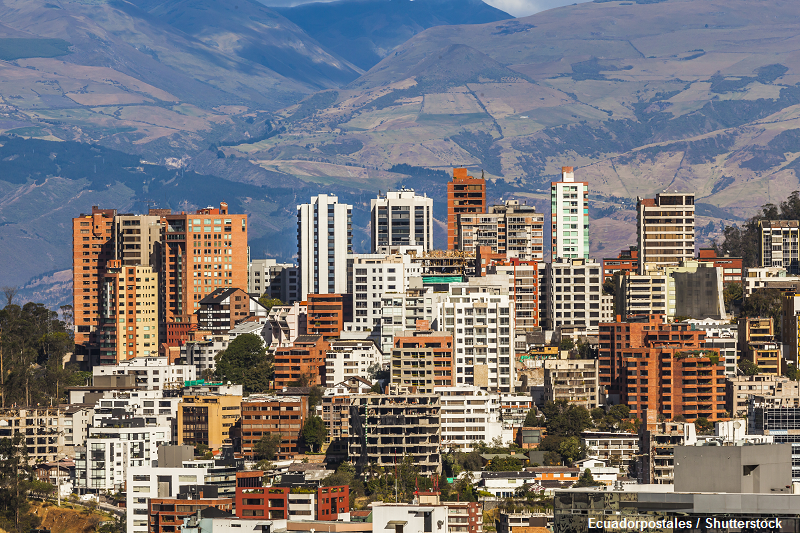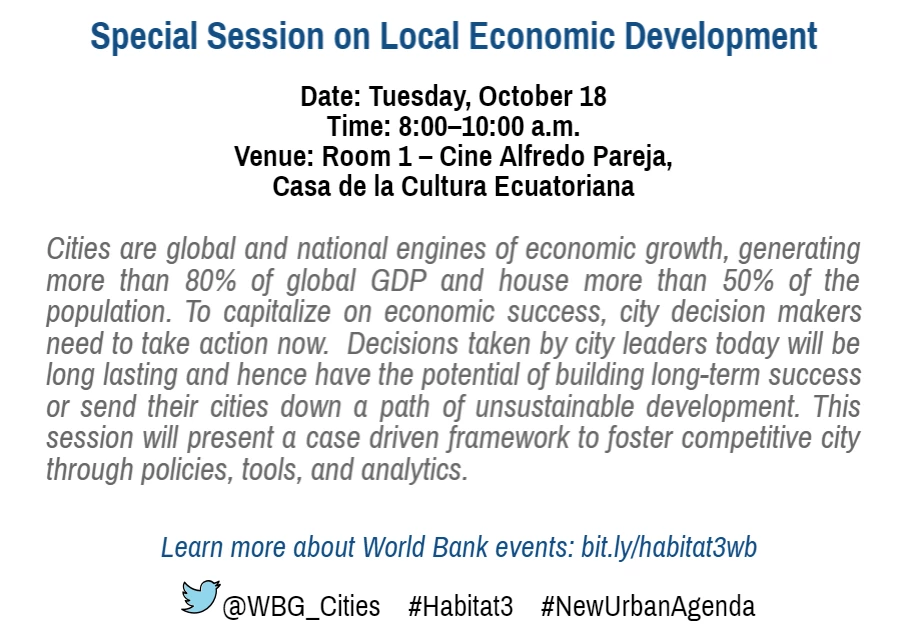
We are all aware of the statistics: cities are home to more than 50% of the world’s population, and they are growing so fast that 66 out of 100 people on earth will be urban dwellers by 2050. This, of course, will have major implications for people and poverty, climate change, and service delivery.
But did you also know that cities are the key drivers of global and national economic growth?
Currently, cities generate more than 80% of global GDP. Since the early 2000s, three-quarters of the world’s 750 largest cities have grown faster than their national economies. One of the key reasons for those cities’ success is higher productivity—as a result of their ability to attract skilled workers—as well as a high concentration of productive entrepreneurs and firms.
For decades, national and city leaders have also taken actions to build competitive cities, increasingly facilitating firms and industries to create jobs, raise productivity, and increase incomes over time—especially for the urban poor. They see this as the pathway to eliminate extreme poverty and to promote shared prosperity. This is particularly important in Sub-Saharan Africa and South Asia, where most of the world’s extreme poor live.
Surely, cities are the economic powerhouse critical for eliminating extreme poverty, but not all cities are reaping the same dividend of growth. For example, the top 10% of the world’s cities show an annual GDP growth of 13.5%, while 90% of them are closer to a 4.4% growth rate. Similarly, the top 10% of cities enjoy 9.2% annual employment growth, with the remainder revealing only a 1.9% rate.
Why is there such a gap? What investment and actions are needed to help all cities achieve sustainable growth and end poverty? How can my city achieve and maintain higher competitiveness? What have other cities done to create jobs and growth? What should be the top priorities for my city?
These are some of the questions that national leaders and mayors will discuss during a Special Session on October 18 at the UN Habitat III summit in Quito, Ecuador.

Already, many mayors have grown familiar with the causes of uneven growth among cities—constraints in the regulatory environment, insecure access to land and working premises, unevenly distributed benefits of infrastructure production, limited access to finance technology and market information, and limited skills level of the population.
To tackle these challenges, recent research suggests several key areas of action, including:
- Focusing on economic structure with an emphasis on structural transformation first, and efficiency gains and productivity next
- Promoting long-term growth in tradeable sectors, which then grows the economic pie
- Growing existing firms, attracting outside investors, and creating new businesses
Cities should also pay particular attention to the “who”—the power of “growth coalitions”—as well as to the “how”—how to turn strategies into action. Ideally, cities would choose a strategy for economic development, align their budget to finance it, solve problems during implementation, and mobilize sufficient resources and attention to the quality of implementation.
Decisions made by city leaders today will have a long-lasting impact on jobs and livelihoods in the future. More on how cities can promote sustainable development will be discussed at the October 18 Special Session on Local Economic Development at Habitat III. The World Bank will also provide speakers for Special Sessions on Jobs and Livelihood and Informal Sector.
Join the conversations in Quito—or on Twitter by following @WBG_Cities and #Habitat3.



Join the Conversation